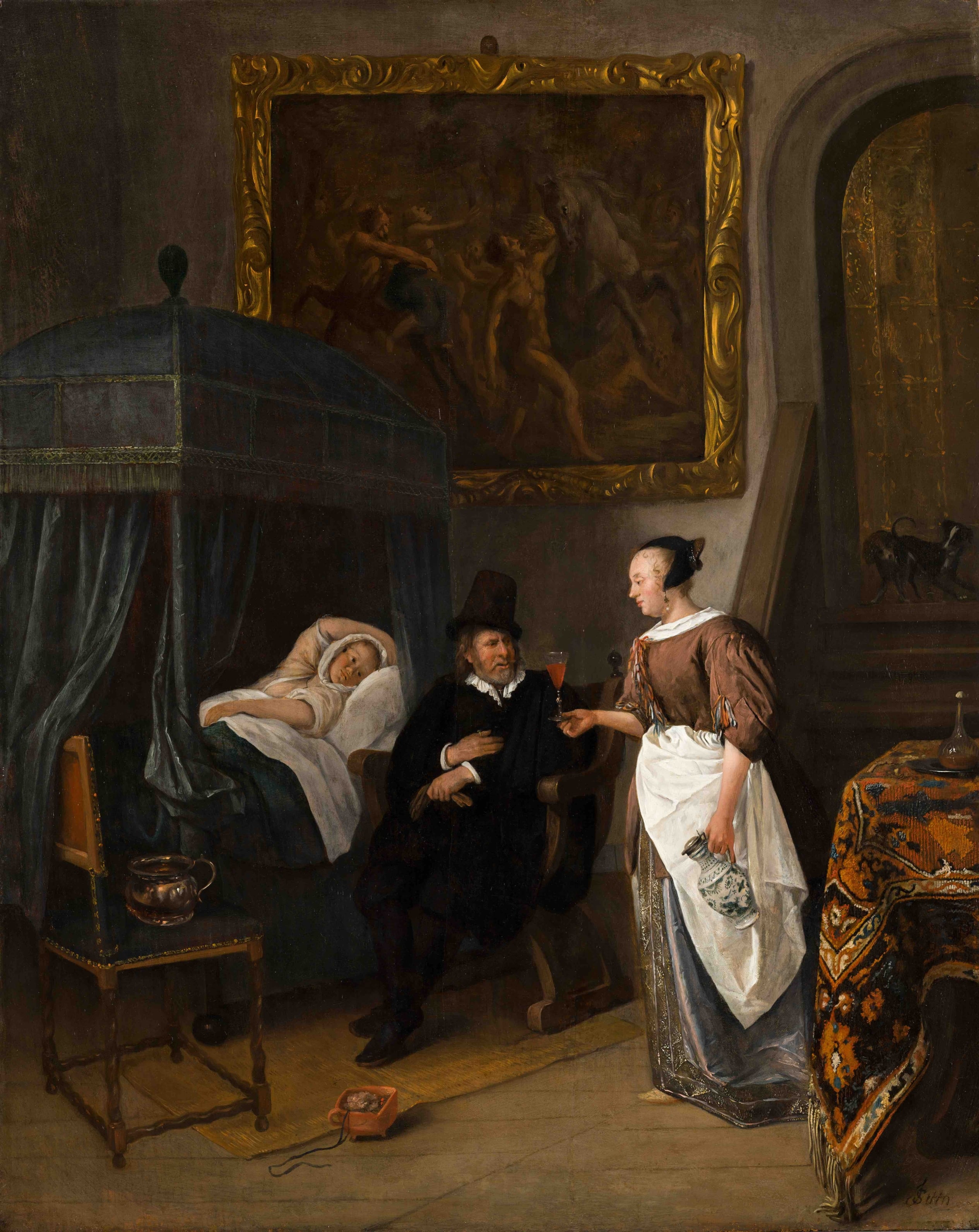Wietse Leenders: Don’t Fall, Val Kilmer, Don’t Fall! (A Prologue)
Eighteen young Flemish and Dutch authors drew inspiration from the collection held by the Mauritshuis in The Hague. They looked at seventeenth-century paintings through the lens of an alternative history which they then brought to life in short but powerful texts. Wietse Leenders was inspired by The Doctor’s Visit, painted by Jan Steen. ‘First off, it’s important for us to situate the story in time’
 Jan Steen, The Doctor’s Visit, c. 1665-1668
Jan Steen, The Doctor’s Visit, c. 1665-1668© Mauritshuis, The Hague
Don’t Fall, Val Kilmer, Don’t Fall! (A Prologue)
The following story is called ‘Don’t fall, Val Kilmer, don’t fall! (a prologue)’. ‘Don’t fall, Val Kilmer, don’t fall!’ opens with a brief description of the four main characters.
SERVANT (39) Serial non-monogamist who likes to watch television
MARLÈNE (27) Pathological painter
DOCTOR (74) Alcoholic
VAL KILMER (64) Famous Hollywood character actor
The ‘logline’, a maximum of three lines that encapsulate the premise of the story, is as follows:
The servant at the last colonial mansion on earth calls the drunk doctor in the middle of the night: Marlène, the lonely heiress to the estate, is painting herself to death.
‘Don’t fall, Val Kilmer, don’t fall!’ is a text of five hundred and eleven words in the form of paratext, commissioned by deBuren in conjunction with the Mauritshuis as part of the deBuren 2024 writers’ residency, and written in response to the painting ‘The Doctor’s Visit’ (c. 1665-1668) by Jan Steen, a baroque painter from the Northern Netherlands known for his irony.
The story ‘Don’t fall, Val Kilmer, don’t fall!’ is like the genus euplotes. The euplotes is a single-celled organism that moves using fourteen legs controlled by a network of tubes or microtubules, which allows it to display exceptionally sophisticated behaviour without actually possessing a brain or a central nervous system.
Here we go.
First off, it’s important for us to situate the story in time. I have opted for a combination of 17th-century Leiden and February 2002 outside the Pentagon, where then US Defence Secretary Donald Rumsfeld, in an attempt to legitimise the invasion of Iraq, uttered the phrase: ‘there are known knowns (…), there are unknown knowns and there are unknown unknowns.’
The reader will soon notice that the structure of ‘Don’t fall, Val Kilmer, don’t fall!’ in fact consists of inward, spiral movements that never find their centre, a tactic borrowed from French philosopher and literary theorist Jacques Derrida and his phrase ‘ne tournons pas autour du pot’ in the book Sauf le nom, translated as Passions, in which he describes beating about the bush as a necessity. As such, ‘Don’t fall, Val Kilmer, don’t fall!’ tries the reader’s patience, but also frames the contours of the ineffable.
‘Don’t fall, Val Kilmer, don’t fall!’ derived the idea for its key scene from an extremely slow head-on collision between two cars with respectively one and two occupants to which I, Wietse, on a bridge across the river Po on the Cassela Monferrato ring road, was a witness. In the run-up to it, the literal crash lost its meaning, and the need to depict the figurative crash in ‘Don’t fall, Val Kilmer, don’t fall’ fell away even before that crash.
Marlène dies just as ABC News broadcasts an interview with Val Kilmer, one of Hollywood’s most temperamental character actors. He disappeared off cinema screens when, following his throat cancer diagnosis, he could only talk through a tracheostomy tube fitted into an incision in his windpipe, so that, according to New York Times journalist Taffy Brodesser-Akner, he sounded like ‘something between a squeak and a voiceless roar’.
Val Kilmer (…)






Leave a Reply
You must be logged in to post a comment.